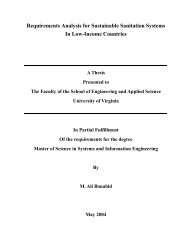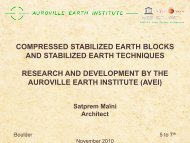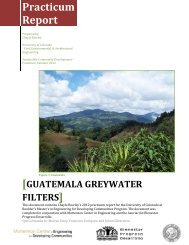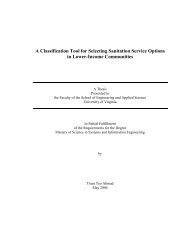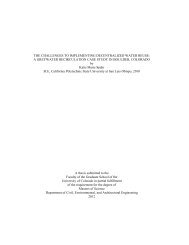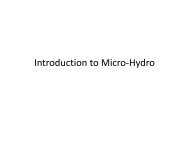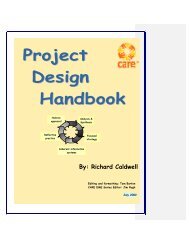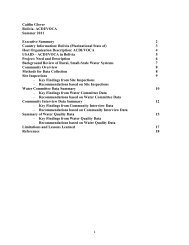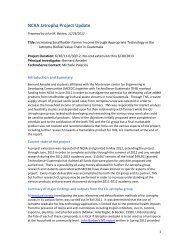SCEBs - University of Colorado Boulder
SCEBs - University of Colorado Boulder
SCEBs - University of Colorado Boulder
Create successful ePaper yourself
Turn your PDF publications into a flip-book with our unique Google optimized e-Paper software.
indicate that no significant strength benefits are achieved by the continued addition <strong>of</strong><br />
sand to the mix. In fact, the average UCS for the 1:4 soil mixes was slightly less than the<br />
average UCS for the 1:3.5 soil mixes. The author suggests that based on the observed<br />
trend, a clay to sand soil mix ratio ranging from 1:3 to 1:4 is optimal for further<br />
investigation with large block testing.<br />
Special care was taken to prepare the specimens at the same water content to<br />
minimize the number <strong>of</strong> factors affecting the results. Soil samples taken from each mix,<br />
at the time <strong>of</strong> production, indicated a water content range <strong>of</strong> 11-12%. All specimens<br />
were produced with the same applied pressure and cured for the same amount <strong>of</strong> time.<br />
Figure 4.25: UMU Mini-Blocks; Varied Soil Mix Ratios<br />
Soil Mix<br />
Ratio<br />
UMU Soil #11 Mix Ratio Test Results<br />
Average Dry<br />
Density [pcf]<br />
Average UCS<br />
[psi]<br />
Average E<br />
[ksi]<br />
1:2.5 136.5 1,346.7 37.4<br />
1:3 136.2 1,741.7 42.7<br />
1:3.5 132.3 1,887.0 43.0<br />
1:4 132.3 1,870.9 42.2<br />
Table 4.15<br />
54



